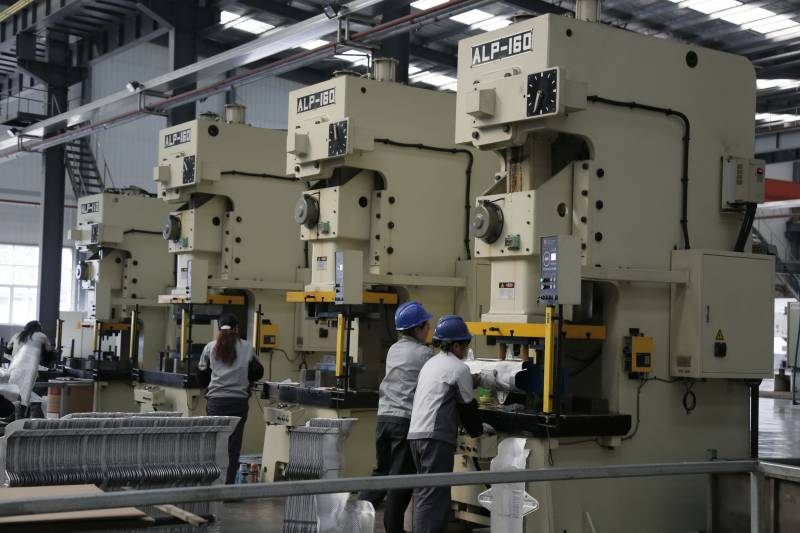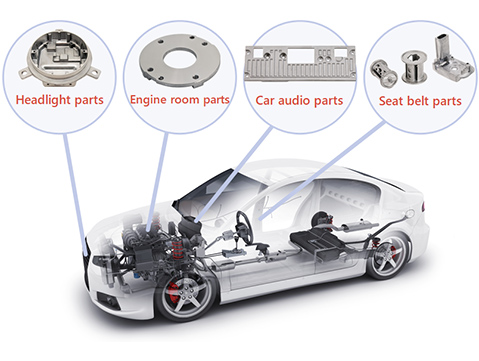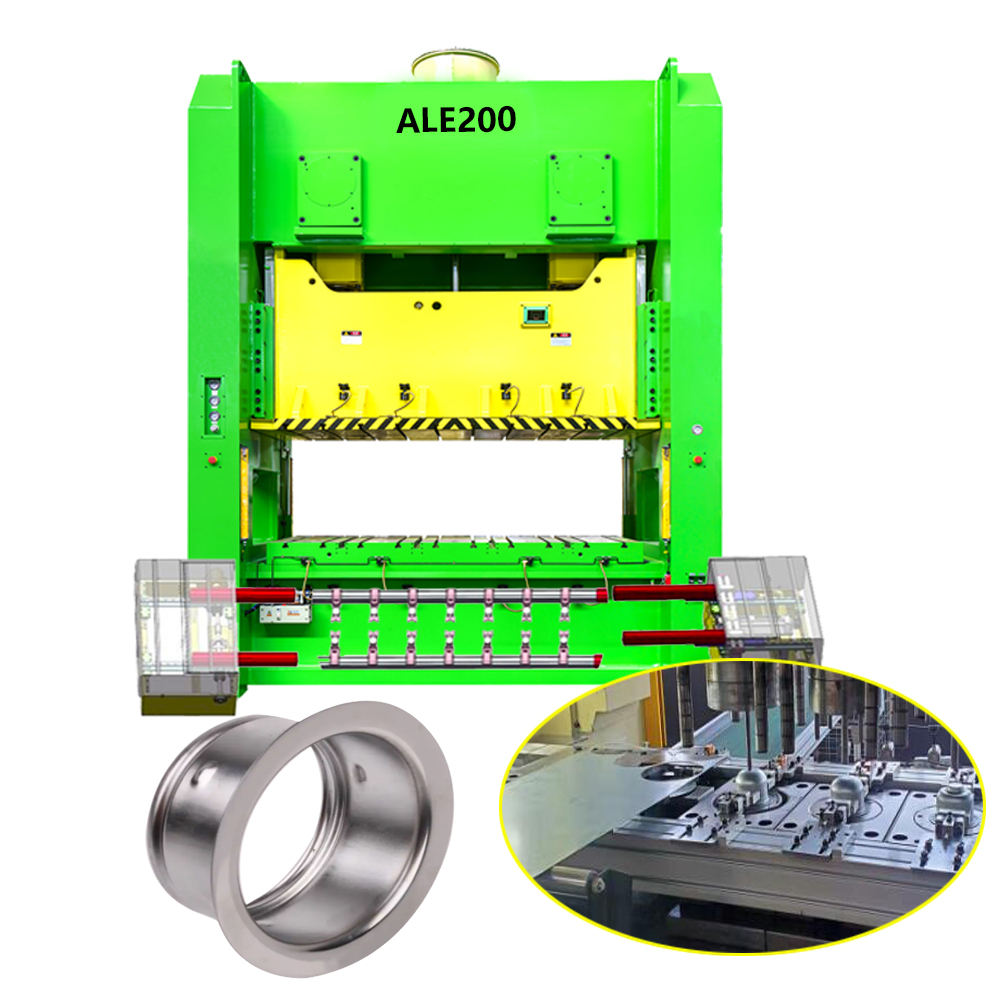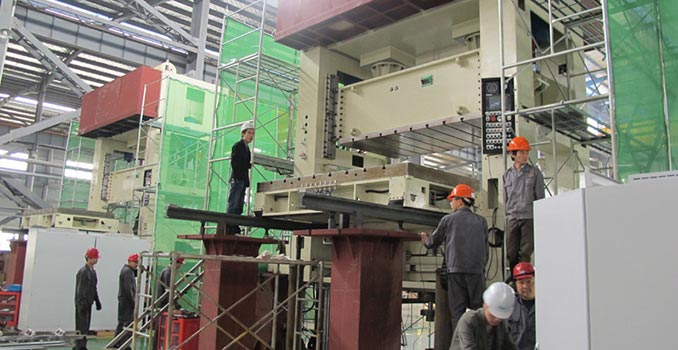Views: 0 Author: Site Editor Publish Time: 2024-10-31 Origin: Site










Automotive metal stamping is an essential process in the manufacturing of modern vehicles. It’s a technique that not only shapes and forms metal components but also enables manufacturers to produce durable, lightweight, and precise parts that contribute to the safety and efficiency of vehicles. Let's explore this vital process and how it has revolutionized the automotive industry.
Metal stamping is a manufacturing process that uses dies and high-pressure machines to shape flat metal sheets into a variety of parts and components. Originally developed in the 19th century, the process has evolved significantly, incorporating automation and precision techniques. The process involves pressing, bending, punching, and cutting metal sheets, transforming them into specific shapes and structures required for various industries, with the automotive sector being one of the largest users.

The automotive industry relies heavily on metal stamping for mass-producing quality components at affordable costs. This process allows manufacturers to create intricate designs with high precision, essential for building safe and efficient vehicles. Automotive metal stamping provides structural integrity, durability, and aesthetic appeal while also being highly scalable, which makes it cost-effective for high-volume production runs.
The automotive metal stamping process involves multiple steps to transform metal sheets into complex parts used in vehicle construction:
Blanking: Large metal sheets are cut into smaller, manageable pieces.
Punching: The blanked pieces are punched with holes, slots, or other designs.
Bending: The metal is bent or folded into specific shapes.
Embossing: Final touches are added, including texturing and strengthening features.
Each step is carefully controlled to ensure uniformity, durability, and quality in the resulting parts, which is crucial for automotive applications.
Different stamping processes are used to create various vehicle parts. Each method is tailored to the complexity and design requirements of the part:
Progressive Die Stamping: Uses multiple stations to perform a series of operations as the metal progresses through each stage, ideal for high-volume parts with consistent design.
Transfer Die Stamping: Parts are moved from one press station to the next, useful for larger, more complex parts.
Compound Die Stamping: Combines multiple actions in a single stroke, often used for simpler shapes.
Deep Drawing: Used to form deeper, hollowed parts, like fuel tanks and other container-shaped parts.
Each of these methods has specific applications depending on the complexity, volume, and design intricacies required.

Metal stamping in the automotive sector primarily uses steel and aluminum due to their strength, durability, and malleability. Here's an overview of common materials:
Steel: Known for its strength and durability, making it suitable for body panels and structural parts.
Aluminum: Lightweight yet strong, aluminum is often used in parts where weight reduction is crucial, such as engine components.
Brass and Copper: Less common but used for specific electrical components due to excellent conductivity.
Each material has advantages depending on its role in the vehicle, from providing structural support to enhancing fuel efficiency by reducing overall weight.
Metal stamping produces a wide array of vehicle parts, contributing to both functional and aesthetic aspects:
Body Panels: Metal stamping forms the doors, hoods, fenders, and roofs.
Engine Components: Stamped parts make up the engine block, fuel tanks, and transmission systems.
Structural Components: Chassis and frame components are stamped to provide vehicle integrity and crash safety.
Interior Parts: Stamping is also used for interior components, like seat frames, supporting both comfort and safety.
This versatility makes metal stamping indispensable for producing nearly every metal part in a vehicle.
Automotive metal stamping offers several benefits that make it essential to vehicle manufacturing:
Cost-Effectiveness: Mass production of parts with minimal waste reduces overall costs.
High Precision and Consistency: Each part is uniform, ensuring consistent quality and fit.
Durability and Strength: Stamped metal parts withstand wear and tear, enhancing vehicle longevity.
Material Efficiency: The process minimizes material waste, which contributes to sustainability and reduces costs.
These advantages collectively contribute to more affordable, reliable, and sustainable vehicle production.
Despite its benefits, automotive metal stamping faces challenges:
Complexity in Design: Creating intricate parts with high precision can be difficult, especially for new, lightweight materials.
Quality Control: Ensuring every part meets safety and quality standards is challenging in high-volume production.
Machine Wear: Continuous stamping wears down machines and dies, leading to maintenance costs and production slowdowns.
Manufacturers must invest in regular maintenance and advanced quality control to address these challenges effectively.

Innovation is rapidly transforming automotive metal stamping:
CNC Machining: Allows for extremely precise stamping through computer-controlled processes.
Robotics and Automation: Robotics streamline the stamping process, reducing manual labor and improving safety.
AI in Quality Control: Machine learning helps detect defects early, improving overall quality and reducing waste.
These advancements are helping companies produce better, safer parts while keeping costs down.
Dies are custom tools that shape metal into specific designs. Different types of dies, such as progressive, transfer, and compound dies, help achieve various shapes and dimensions. The quality of these dies directly impacts the quality of stamped parts, making them essential for achieving uniformity and accuracy.
Safety is a top priority in metal stamping due to high-pressure machinery and sharp metal edges. Workers are trained in handling equipment and undergo safety protocols to avoid injuries. Automation has also reduced risks by minimizing human involvement in dangerous parts of the process.
Automotive metal stamping can be resource-intensive, but efforts are being made to reduce its environmental footprint. Recycling and reusing materials, as well as adopting energy-efficient machines, help reduce waste. Many plants are also embracing sustainable practices, such as using renewable energy sources, to minimize environmental impact.
The future of metal stamping in the automotive industry is likely to focus on lightweight materials and design flexibility. Innovations in AI-driven quality control, new alloys, and fully automated production lines are expected to further optimize the process, making vehicles even more efficient and environmentally friendly.
Automotive metal stamping is a cornerstone of vehicle production, providing durable, safe, and affordable parts that shape every modern car. With continuous technological advancements, it remains poised to meet the evolving demands of the automotive industry.
1. What are the main materials used in automotive metal stamping?
Steel, aluminum, brass, and copper are common materials, each chosen based on the strength, durability, and specific function of the part.
2. How does metal stamping contribute to vehicle safety?
Stamped metal parts create strong, uniform structures that enhance crash resistance, contributing to the overall safety and durability of the vehicle.
3. What is the difference between progressive and transfer die stamping?
Progressive die stamping involves multiple operations in a single line, while transfer die stamping moves parts between separate stations for complex, larger parts.
4. Are there environmentally-friendly methods in automotive stamping?
Yes, recycling, energy-efficient machines, and sustainable materials reduce waste and improve the environmental footprint of metal stamping.
5. How has automation changed automotive metal stamping?
Automation has improved efficiency, reduced human error, and enhanced safety, allowing manufacturers to produce higher-quality parts at scale.